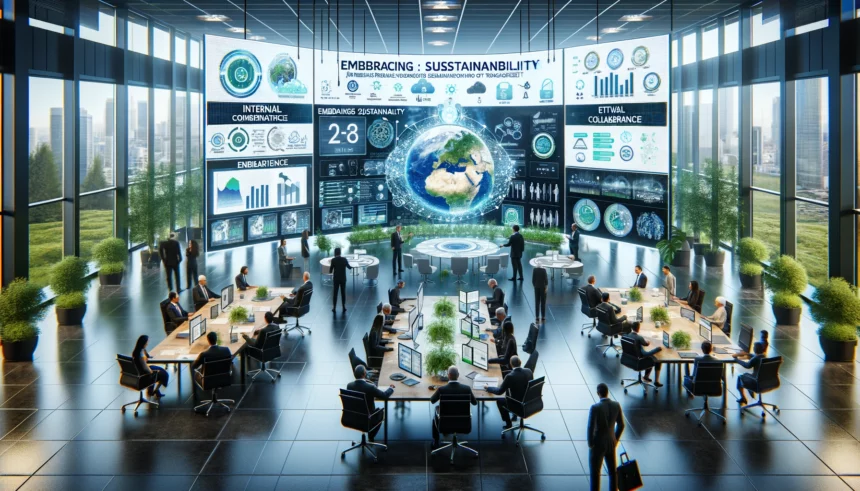Overview
Climate change is becoming more evident with each passing year. The National Oceanic and Atmospheric Administration reported that 2023 was the warmest year on record. With rising greenhouse gas levels, sea temperatures, and sea levels, the pressure on companies to adopt sustainable practices is mounting. Governments worldwide are implementing stricter laws to combat climate change, urging businesses to rethink their strategies. Preparing for these regulations isn’t just about compliance; it’s an opportunity to improve efficiency, collaboration, and resilience. Here are three key strategies for companies to embrace sustainability regulation.
1. Tracing the Environmental Footprint Using Data
Importance of Accurate Data
To start, companies need to assess their environmental impact comprehensively. Accurate data is crucial for making informed decisions. The GHD Sustainability Monitor 2024 revealed that 25% of executives require clearer metrics and reporting to achieve sustainability goals. Regulations are increasingly data-driven, so businesses must understand and validate their data to prepare effectively.
Steps to Trace the Footprint
- Gather Data: Collect detailed information on energy consumption, waste management, supply chain practices, and more.
- Conduct a Gap Assessment: Use tools like data analytics, AI, and IoT devices to monitor and analyze resource consumption and emissions. This helps in identifying gaps in current practices.
- Collaborate with Suppliers: Extend the assessment to suppliers and partners to ensure a holistic approach to sustainability.
Benefits
Investing in these evaluations is crucial, especially for companies new to sustainability assessments. Although 61% of executives find it challenging to respond to environmental regulations, understanding environmental risks not only aids compliance but also enhances overall business resilience and performance.
2. Embedding Sustainability into Business DNA
Strategic Planning
With a clear understanding of their environmental impact, companies can set ambitious yet achievable sustainability goals aligned with regulatory expectations. While there might be upfront costs, the long-term benefits include risk mitigation, improved brand reputation, and increased stakeholder trust.
Practical Steps
- Set Manageable Goals: Focus on smaller, achievable goals that contribute to larger sustainability objectives.
- Material Assessment: Identify and prioritize the most impactful environmental, social, and governance issues.
- Align Financial Goals: Integrate financial and sustainability goals to identify areas where environmental responsibility and economic opportunities intersect.
Overcoming Uncertainty
Uncertainty about operating in a net-zero world can deter businesses from planning. The key is to focus on what is certain and use standard approaches to sustainability planning. By concentrating on manageable initiatives, companies can build momentum and gradually create a culture of sustainability.
3. A Collaborative Approach for Sustainable Success
Internal Collaboration
Breaking down silos and encouraging cross-functional cooperation within the organization is essential. Collaboration between sustainability teams, risk management, and operations can lead to a more comprehensive evaluation of sustainability practices.
External Partnerships
- Industry Alliances: Collaborate with industry peers, government, and even competitors to create shared standards and best practices.
- Engage with Regulators: Participate in industry forums and dialogues with regulators to contribute to the development of effective regulations.
- Collaborative Initiatives: Work with sustainability-focused organizations to stay ahead of emerging trends and expectations.
Benefits
Proactive collaboration enhances operational efficiency and reduces risks, such as supply chain disruptions. It also fosters a positive public image and provides valuable insights into sustainability trends.
Conclusion
The convergence of global sustainability challenges and regulatory mandates requires businesses to adopt a proactive and strategic approach. By conducting thorough assessments, embedding sustainability into their DNA, and fostering collaboration, companies can become forward-thinking organizations. These strategies not only ensure compliance but also pave the way for a sustainable and resilient future, where businesses contribute positively to the environment and society while thriving in a more sustainable world.
















